CORPORATE EXECS & ASSISTANTS GIVING EACH OTHER THE BUSINESS
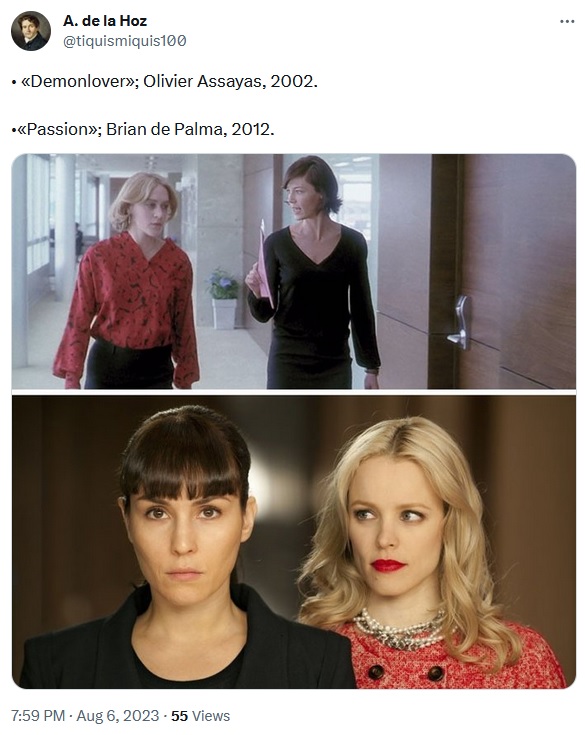
 Hello and welcome to the unofficial Brian De Palma website. Here is the latest news: |
|---|
E-mail
Geoffsongs@aol.com
-------------
Recent Headlines
a la Mod:
Listen to
Donaggio's full score
for Domino online
De Palma/Lehman
rapport at work
in Snakes
De Palma/Lehman
next novel is Terry
De Palma developing
Catch And Kill,
"a horror movie
based on real things
that have happened
in the news"
Supercut video
of De Palma's films
edited by Carl Rodrigue
Washington Post
review of Keesey book
-------------
Exclusive Passion
Interviews:
Brian De Palma
Karoline Herfurth
Leila Rozario
------------
------------
| « | August 2023 | » | ||||
| S | M | T | W | T | F | S |
| 1 | 2 | 3 | 4 | 5 | ||
| 6 | 7 | 8 | 9 | 10 | 11 | 12 |
| 13 | 14 | 15 | 16 | 17 | 18 | 19 |
| 20 | 21 | 22 | 23 | 24 | 25 | 26 |
| 27 | 28 | 29 | 30 | 31 | ||
De Palma interviewed
in Paris 2002
De Palma discusses
The Black Dahlia 2006

Enthusiasms...
Alfred Hitchcock
The Master Of Suspense
Sergio Leone
and the Infield
Fly Rule
The Filmmaker Who
Came In From The Cold
Jim Emerson on
Greetings & Hi, Mom!
Scarface: Make Way
For The Bad Guy
Deborah Shelton
Official Web Site
Welcome to the
Offices of Death Records
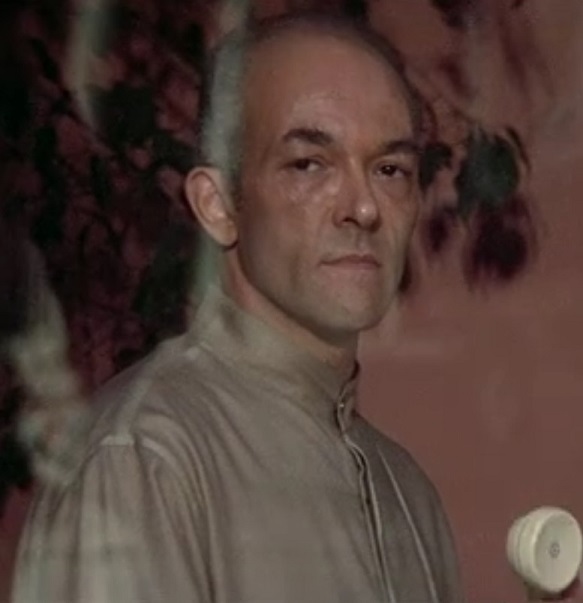
Margolis had appeared in De Palma's 1980 film Dressed To Kill, walking past a nurse as a patient at Bellvue Hospital in the film's final dream sequence.
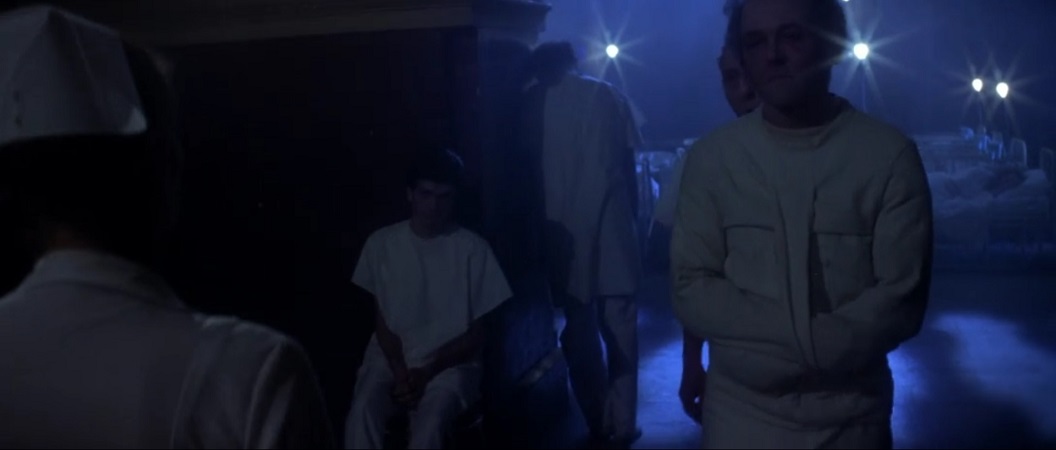
Talking about Scarface with The New York Observer's Drew Grant in 2012, Margolis said, “The thing about Al was that you didn’t know when he was going to start being Tony. We’d be sitting in the car, and he’d just start in about how ugly all of us were—how between the four of us, we’d be able to make one good-looking guy.”
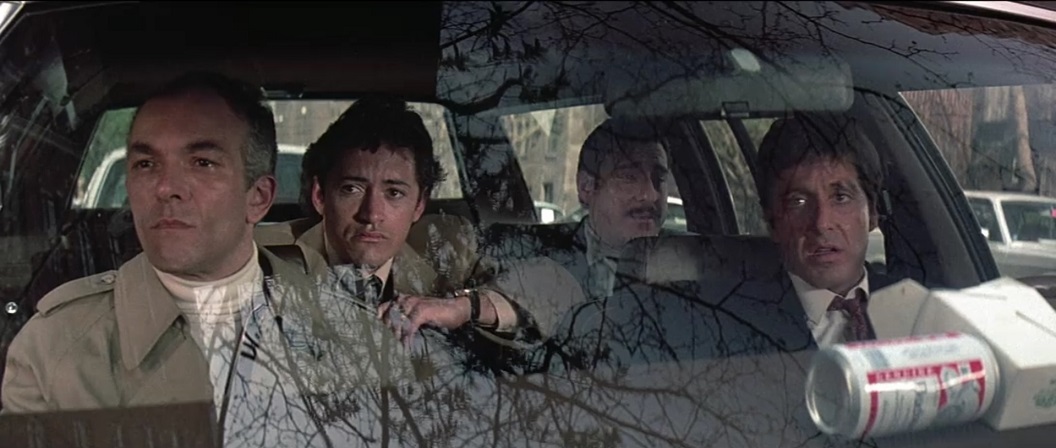
On The SitDown with Yesenia De Avila in 2016, Margolis was asked about working on Scarface:
They had a rehearsal in, I think, November of ’82, where they brought everybody out to L.A. for a week, and we were in one room. It was the only time I was ever around Michelle Pfeiffer – I had no scenes with her.Did you ever imagine the iconic film it would become?
No, no one did. In fact, when the film opened, it bombed. Are you aware of that?
Yeah…
The critics said it was a piece of garbage. It was ahead of its time, in some ways. If it had come out in ’87, maybe it would have done better. It picked up a big following in the later eighties on video, when people started watching it on video. And then the whole hip-hop crowd got into it big time. They can’t get enough of it, and that really made it the biggest thing in the world.
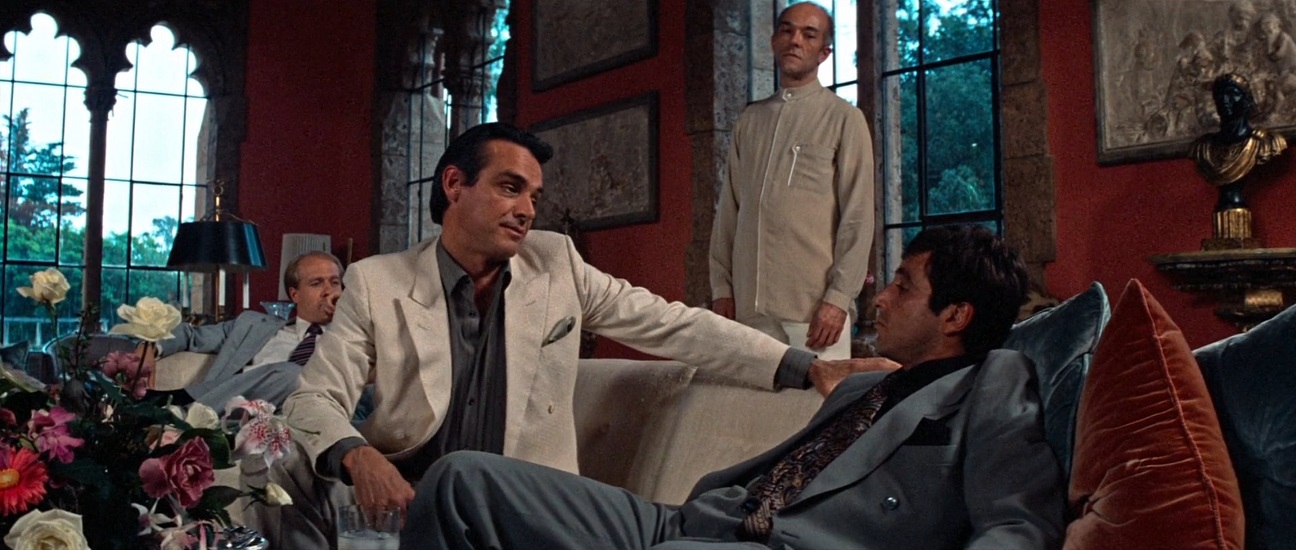
Here's a portion of the New York Times obit posted yesterday by Alex Williams:
Mr. Margolis notched more than 160 credits in movies and on television, gaining particular notice with memorable roles in Brian De Palma’s “Scarface” (1983), playing opposite Al Pacino as a cocaine-syndicate henchman, and in the Jim Carrey comedy “Ace Ventura: Pet Detective” (1994), in which he played Ventura’s aggrieved landlord with delicious malevolence.He also became a go-to actor for the director Darren Aronofsky, appearing in his films “Pi” (1998), “Requiem for a Dream” (2000), “The Fountain” (2006), “The Wrestler” (2008), “Black Swan” (2010) and “Noah” (2014).
But no role made him as instantly recognizable to millions of viewers as Hector in Vince Gilligan’s critically acclaimed series “Breaking Bad,” which ran for five seasons on AMC, starting in 2008, starring Bryan Cranston, Aaron Paul and Anna Gunn, and in its prequel, “Better Call Saul,” which ran for six seasons starting in 2015, starring Bob Odenkirk and Giancarlo Esposito — two of the many actors who appeared in both shows — as well as Rhea Seehorn.
The role, in “Breaking Bad,” brought Mr. Margolis an Emmy nomination in 2012 for outstanding guest actor in a dramatic series.
An aging former drug cartel don from Mexico, Hector, also known as Tio, had come to live in a New Mexico nursing home, unable to speak or walk following a stroke but still firmly in control of his power as a rival to Walter White (Mr. Cranston), a mild-mannered high school chemistry teacher who evolves into a coldhearted kingpin in the crystal methedrine trade.
Despite his lack of dialogue in “Breaking Bad,” Mr. Margolis proved a scene stealer from his wheelchair, his eyes bulging, his face trembling with rage, despite the nasal cannula pumping oxygen up his nose and his palm furiously banging his bell, taped to an arm of the chair, whenever he needed attention.
“Everybody says, ‘My God it must be difficult to work without words,’” he said in a 2012 interview with Fast Company. “My joke is, ‘No. I’m already grounded in the fact that I’ve been acting without hair for years, and that’s not a problem. So, now I’m acting without words.’”
As a young actor, he added, he had trained to communicate emotions without dialogue. He also borrowed mannerisms, including a tobacco-chewing motion with the side of his mouth, from his mother-in-law, who had been confined to a Florida nursing home after a stroke.
As viewers discovered in “Better Call Saul,” which featured Mr. Margolis as an ambulatory and verbose Hector, the character had wound up in a wheelchair after a defector in his organization switched his medication to incapacitate him, leading to the stroke.
Despite the character’s broken moral compass and hair-trigger rage, Mr. Margolis managed to evoke Hector’s complexity — his humanity, even.
“You don’t play villains like they are villains,” he said in a 2012 interview with The Forward, the Jewish newspaper. “You play them like you know exactly where they are coming from. Which hopefully you do.”
Mark Margolis was born on Nov. 26, 1939, in Philadelphia to Isidore and Fanya (Fried) Margolis. He attended Temple University briefly before moving to New York, where at 19 he got a job as a personal assistant to the method acting guru Stella Adler. He also took a class with Lee Strasberg at his famed Actors Studio.
After making brief appearances on television shows like “Kojak” and in movies like the Dudley Moore comedy “Arthur” and Mr. De Palma’s “Dressed to Kill” (both from 1981), Mr. Margolis got his first taste of renown in “Scarface,” playing Alberto the Shadow, a bodyguard and hit man for Alejandro Sosa (Paul Shenar), the Bolivian drug boss who shows Mr. Pacino’s Tony the ropes in the cocaine business.
In one slyly comic moment in “Breaking Bad,” Hector is seen watching on television a famous scene from “Scarface” in which Tony spontaneously shoots Alberto in the head when he learns that Alberto’s planned car-bomb murder of a nosy journalist would also kill the journalist’s wife and children.
Despite his turns as a Latin heavy, Mr. Margolis, who was Jewish, did not speak Spanish, a point that earned him no shortage of derision from native speakers.
“I’ve lived in Mexico,” he said in 2016 interview with Vulture, New York magazine’s culture site. “I know enough of the grammar of it, and I’m pretty good with the accent of it. If I get a good tutor, I can lock into it pretty quickly.”
In addition to his son, he is survived by his wife of 61 years, Jacqueline Margolis; a brother, Jerome; and three grandchildren.
In the years between “Scarface” and “Breaking Bad,” Mr. Margolis’s prodigious output made him a known actor, if not a famous one. “People will often come up to me and say, ‘You’re that wonderful character actor,’” he told The Forward, apparently half seriously. “But I’m not a character actor. I’m a weird-looking romantic lead.”
Unlike most romantic leads, though, Mr. Margolis struggled at times to make a living. Fans, he told The New York Observer in 2012, “think that I’m some sort of rich guy, that everyone in the movies is making the kind of money Angelina Jolie is making.”
He and his wife had lived in the same apartment in Manhattan’s TriBeCa neighborhood since 1975. At least his turn as Hector provided him with a dash of supplemental income at the show’s peak, after a messaging app called Dingbel appropriated Hector’s simplest bell command — one ding for yes, two for no. Dingbel hired him as a spokesman.
As Mr. Margolis told Vulture: “I tell people I’m the second-most famous bell ringer after Quasimodo.”
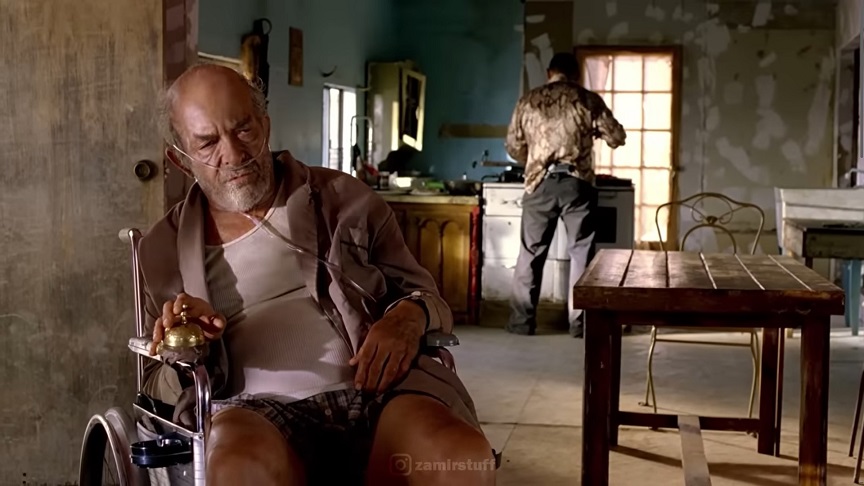

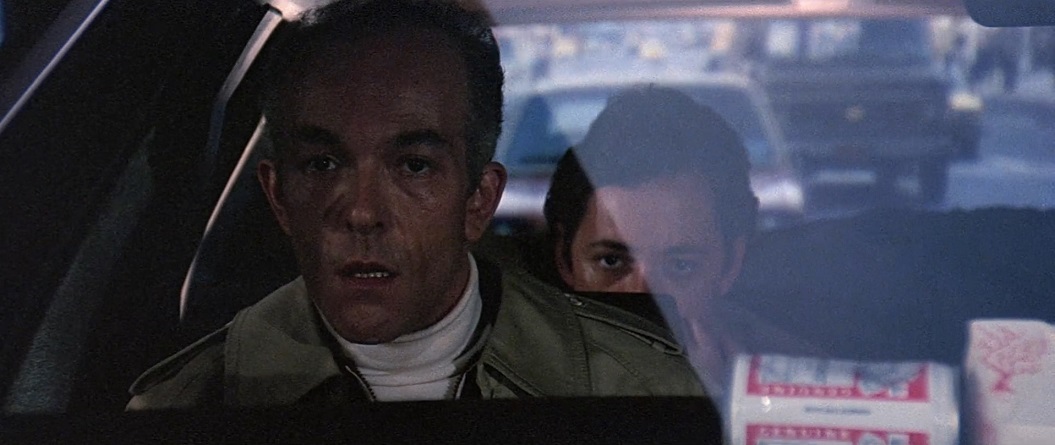
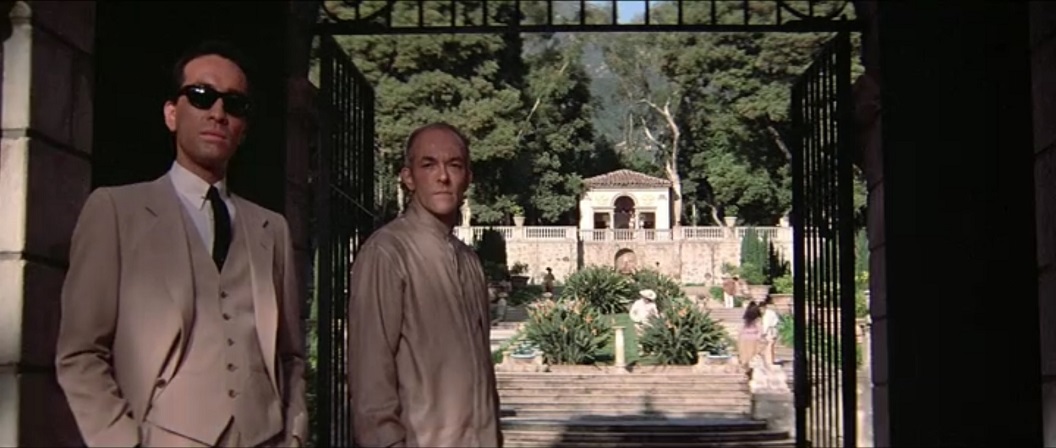
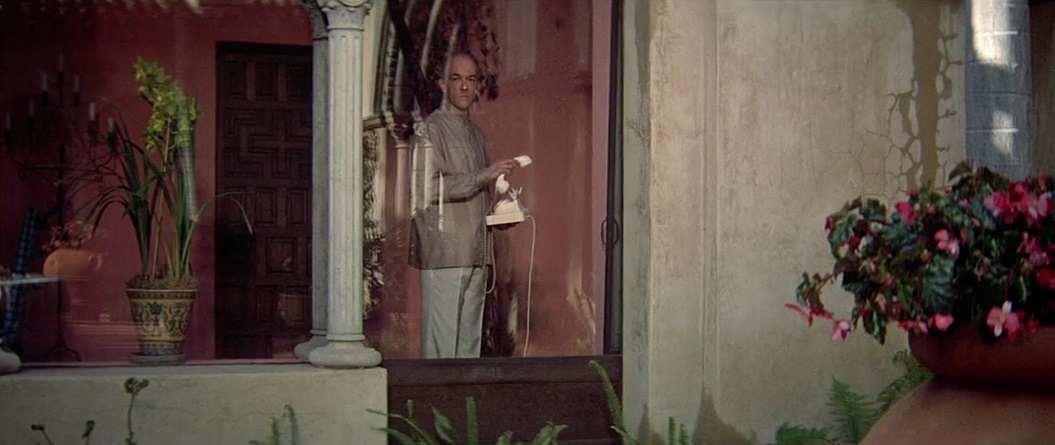

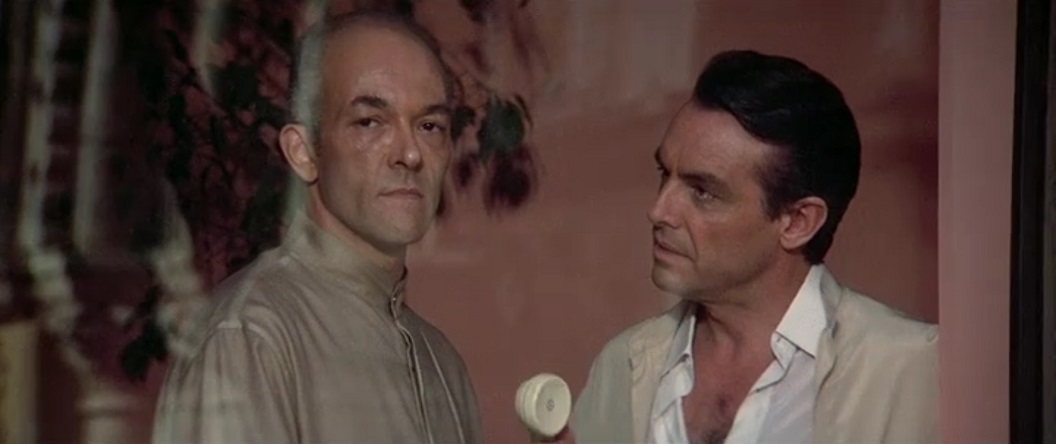
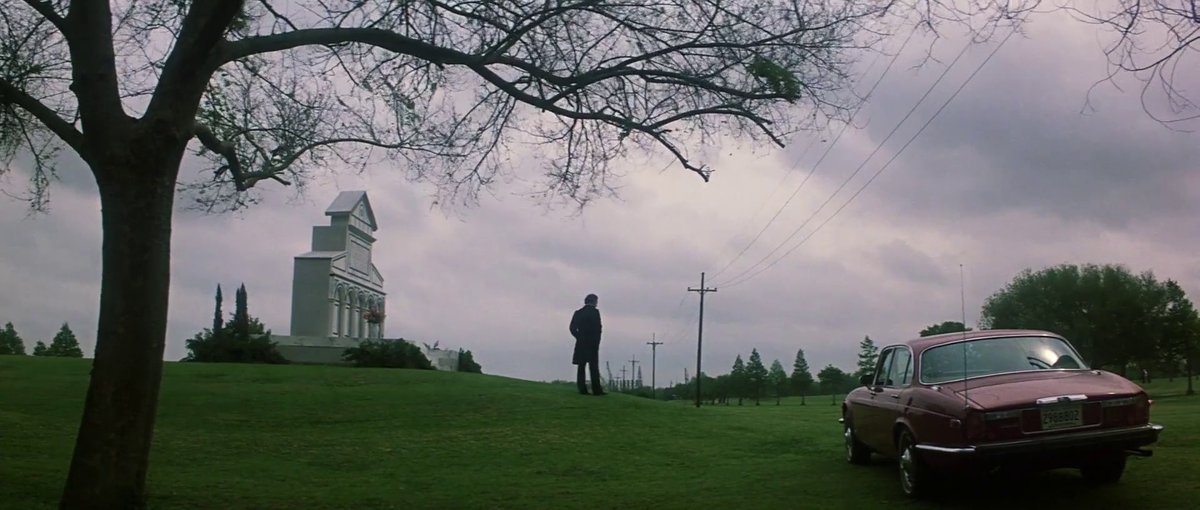
Obsession consciously creates a ghostly dialogue with Vertigo, constructing a similar labyrinth of deception, desire and derangement. Like Hitchcock’s film, it is an ambivalent interrogation of haunted memories and male fantasy, exploring an almost necrophilic love through its increasingly unstable lead, with its psychological traumas lashed to a far-fetched mystery plot. Despite ostensibly realistic settings (in San Francisco and New Orleans respectively), both films require viewers to immerse themselves in their rich, dreamlike atmosphere. Their narratives are driven more by recurring images and repeating patterns than by objective logic, building a maelstrom of uncertain identities and uncanny echoes.The opening of Obsession serves to establish the tone and visual motifs of the film. If Saul Bass’s celebrated title sequence for Vertigo emphasises the perfidious qualities of speech and visual perception, focussing on a female mouth and eye before spiralling into the depths of her pupil, Obsession highlights the unreliability of recollection, while preparing us for the slippery notions of time and fate that will define the story.
Various snapshots slide into the frame alongside the credits. Weathered and a little blurred, they fill only a small portion of the dark screen; like memories, the images are partial and incomplete. Interspersed with the photographs is a full-screen view of a grand Italian-style church, the camera drawing ominously towards its densely geometric exterior as if it were a carefully designed trap. The church also appears in the snapshots, creating a jarring effect that undermines any attempt to understand when the different images are from and how they are related – they share a location, but do not seem to belong in the same timeframe. We are given no context or identification for the pictures until a hand-written note appears in the final one: Florence, 1948. Yet as soon as the date seems settled, we move elsewhere, gradually creeping towards a mansion whose windows lighten and darken rhythmically. As we realise that the occupants are watching the very slideshow we have just been viewing, onscreen text identifies the year as 1959 and the place as New Orleans, a world away from Romanesque churches and post-war Europe. Less than three minutes have passed, but already our sense of time and destination have deliberately been confused, and not for the last time.
The prominence of the church in the opening credits alerts us that it will be important to the story (much like Vertigo’s Mission San Juan Bautista), but the way in which we next see it is both revealing and unexpected. The slides we saw depicted Michael and Elizabeth in Florence at the start of their relationship, with the church (San Miniato al Monte) the venue of their first meeting. Following the loss of his wife and daughter, Michael builds a reproduction of the church front as their tomb. The ‘San Miniato’ we now see is a replica located in Louisiana, forcibly enshrining the past in the present, no matter how out of place. Tellingly, as the finished memorial is revealed to us, a further onscreen title abruptly moves the date forward from 1959 to 1975, blurring period and location yet again: like the eternally grieving Michael, we are becoming unmoored, struggling to stay afloat in a stream of visual repetitions and sudden shifts in time. The false landmark also illuminates the story’s core themes of deceptive appearance and flawed resurrection. While undoubtedly a sincere tribute, the façade is not the original (perhaps also suggesting a self-referential wink towards inevitable criticisms of the film itself). The morbidly grandiose monument symbolises Michael’s almost religious faith in his romantic memories while hinting that such fervent belief may be fallible and unhealthy, blinding him to reality and the passing of time.
Inevitably, Michael’s 1975 trip to Florence leads him back to the real San Miniato for his first encounter with his wife’s doppelganger, Sandra. She is helping to restore a 14th century painting of the Madonna – an idealised supernatural vision of femininity that mirrors the sanctified role his own late wife has assumed in Michael’s mind. When Sandra explains the dilemma faced by the preservation authorities, her words also serve to neatly summarise the emotional conundrum posed by the film. Damaged by moisture, the paint has begun to peel, revealing an older, cruder image underneath; should they investigate this new finding, or “should they restore the original, but never know for sure what lies beneath it?” Michael favours the latter option, once again declaring the preference for romanticised perfection that is the cause of his torments, choosing to overlook uglier truths until it is too late.
The recurring spiral motif central to Vertigo is recreated in Obsession by the revolving paddle of the riverboat in the ransom scenes. Its bright red wheel relentlessly churns the murky water as the tension ratchets up, a visual warning of the dangerous depths to come. As in Hitchcock’s film, the camera encircles the characters in several key scenes, creating a dizzying sense that events are spinning out of control. The roving camerawork also creates a powerful sense of symmetry between the opening and closing sequences, as if the end were also the beginning. During the first scene, we waltz around Michael and Elizabeth as they dance at their anniversary party. For the finale, we loop round and round a final embrace, with the use of slow motion giving every movement a choreographed grace as though, once again, we were dancing.
Vilmos Zsigmond’s diffused cinematography lends the film a slippery, soft-focus edge, perhaps best utilised in two quietly stunning 360⁰ panning shots marking apparent shifts in time. The first is a literal move forward in chronology, drifting around the construction site of Elizabeth and Amy’s tomb in 1959 to return to the finished article in 1975, with a barely noticeable cut covering the transition in scenes. The second, which occurs when Sandra unlocks the sealed bedroom and discovers Elizabeth’s diaries, suggests a psychological step back through the years, prowling round the room as she begins her apparent regression in time to ‘become’ Michael’s late wife. Meanwhile, Sandra’s eventual breakdown recalls the opening slideshow to ingenious effect. She moves along a corridor of bright windows broken by intervals of thick darkness, with each alteration in lighting mimicking a changing slide and marking a further descent into her past thanks to Zsigmond’s photography and Paul Hirsch’s brilliant editing.

This summer marks the 22nd season that Cinespia has brought outdoor cinema to Los Angeles. At both L.A. Historic Park and—famously—The Hollywood Forever Cemetery, Angelenos have been able to catch their favorite films.What began as a one-time screening of Strangers on a Train for a crowd of a few hundred eventually morphed into a cinephile haven. Now, Cinespia welcomes over 4,000 moviegoers per night and brings various iconic titles back to the silver screen.
Guests are always encouraged to dress up, with photo booths often popping up at the venues. After this, Cinespia always lines its events with plenty of food and drink vendors to visit before popping down for a movie.
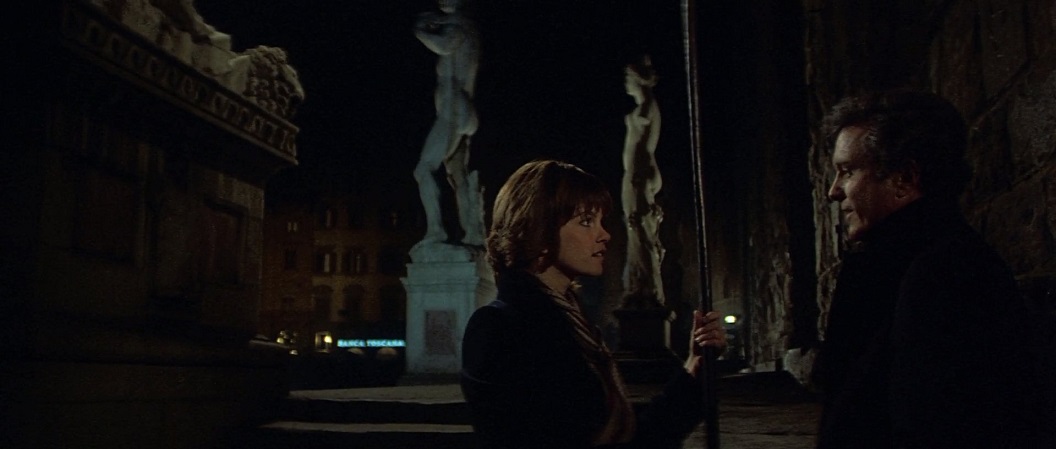
This classic ‘70s thriller stars Cliff Robertson and John Lithgow, both of whom are involved the aftermath of a kidnapping. Though none of the film actually takes place on the Main Line, it’s notable for its mention of Bryn Mawr.While reminiscing about his late wife, Michael Courtland, played by Robertson, talks about his wife’s “Bryn Mawr walk. A Bryn Mawr walk is a kind of a glide, you know? Those girls used to wear long polo coats in those old days, long raincoats. They kind of glide, like they’re late for class. They move fast and just kinda glide.”
Director Brian De Palma was raised on the Main Line and graduated from Friends Central in 1958.
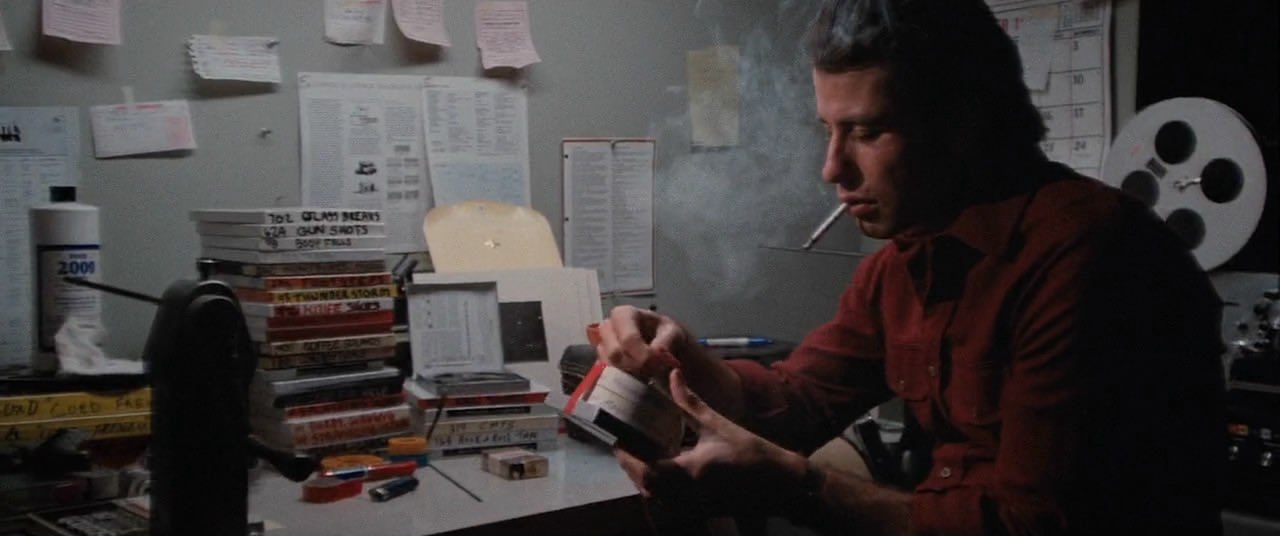
Brian De Palma came of age working in the New Hollywood of the 1970s, alongside peers (and friends) like Martin Scorsese, Steven Spielberg, and Francis Ford Coppola. Yet his films, though often admired, weren’t treated as great feats of artistry, as theirs were. History, shifted by the enthusiasm of younger movie lovers, has changed that in the past few years—but no matter when or how you’ve found your way to it, Blow Out has always been great. John Travolta’s Jack is a sound guy, unambitious and stuck working on B movies, who’s collecting wind noises out in the field one night when he sees a car swerve off a bridge and into a creek. He dives in after it and rescues the woman trapped inside, Nancy Allen’s Sally, a makeup artist and sometime call girl who, it turns out, was consorting with the governor—he was at the wheel when the crash occurred. The governor’s associates rush to cover up Sally’s involvement; meanwhile, Jack begins to suspect that the crash wasn’t accidental. He listens carefully to the recording he collected that evening and clearly hears a gunshot—but the closer he gets to the truth, the more Sally is endangered, and his efforts to protect her backfire. Blow Out is a film filled with mistrust, one where the ghosts of Chappaquiddick and the Zapruder film lurk in the corners. No one, least of all those in positions of power, can be trusted. (The picture is set against a fictional, and garish, celebration of the Liberty Bell, as if to underscore how far the country has strayed from its original, not-yet-cracked ideals.) Allen and Travolta are wonderful here: Allen’s Nancy, naïve but not dumb, fills the movie with light—her description of “the no makeup look” is a marvel of airhead timing. But it’s Travolta, an actor capable of great vulnerability, who breaks you. The movie’s final scene sends you off feeling that nothing is right with the world. It’s the opposite of numbness; rather, a sense of being much too alive.

There are a million stories about criminals sprung from jail who vow to go straight. And then there’s Brian De Palma’s Carlito’s Way. Al Pacino—swaggering, streetwise, lovesick—gives one of his strongest, most fine-grained performances as convicted drug felon Carlito Brigante, whose crooked lawyer (played, fabulously, by Sean Penn in a perfect approximation of a ’70s man perm) somehow gets him freed after just five years of a 30-year sentence. Carlito’s post-prison dream is to buy into a car-rental joint in the Bahamas—all the better if he can persuade the love of his life, Gail (Penelope Ann Miller), to join him, though he broke her heart before going up the river. Few movies give you pretty much everything—exhilarating action and diamond-hard violence, doomed romance, bitterly funny dialogue—in such a compact package. But there’s something else: movie craftsmanship can be deeply pleasurable, but not by itself. In adapting a duo of novels by Edwin Torres (the script is by master screenwriter David Koepp), de Palma works in a style both economical and luxurious. There’s not a single superfluous shot; you’re entreated not just to look, but to see. The visual logic of a sequence involving a poolroom shootout is so gorgeously precise, it’s like a calculus equation written as a sonnet. Carlito’s Way is De Palma’s warmest film, so meticulous, so lyrical, so operatic in scope and pitch that it leaves you feeling both wrecked and deeply satisfied. It’s perfection that breathes.
"An Experience With Al Pacino (Scarface 40th Anniversary) (MIAMI)" is scheduled for Saturday, December 9, 2023, at Fontainebleau Miami Beach. Here are the event details:
'An Experience With' are delighted to announce in association with BleauLive and Capture Studios a true unique once in a lifetime event with the one and only Al Pacino at the stunning FontaineBleau on Miami Beach, 9th December 2023!This man needs no introduction! One of the greatest actors of ALL TIME with an Oscar winning career spanning 50 years!
Pacino will discuss his amazing career and extensive movie back catalogue with a special focus on one of the most iconic movies ever produced 'SCARFACE'.
We decided what better place to celebrate the 40th anniversary then Miami itself. Not only this we have chosen the stunning Fontainebleau Hotel which was an actual filming location for the film.
Interesting fact - did you know that the 9th of December 2023 is EXACTLY 40 years since the cinematic release of Scarface!
To make the event even more memorable we will be working hard behind the scenes to get some of the original cast members from the film to the event.
A LIVE EXPERIENCE WITH not to be missed!
-----------------------------------------------------------
What to expect...
***An exclusive live on-stage interview with the man himself Al Pacino
***High-quality 3-course dinner (selected tickets)
***Live music and band' with Rat Pack singer playing throughout dinner
***Exclusive auction with bespoke signed Pacino memorabilia
***HUGE production with unseen Pacino videos and photos which will be shown throughout the interview on giant screens
+ MUCH MORE
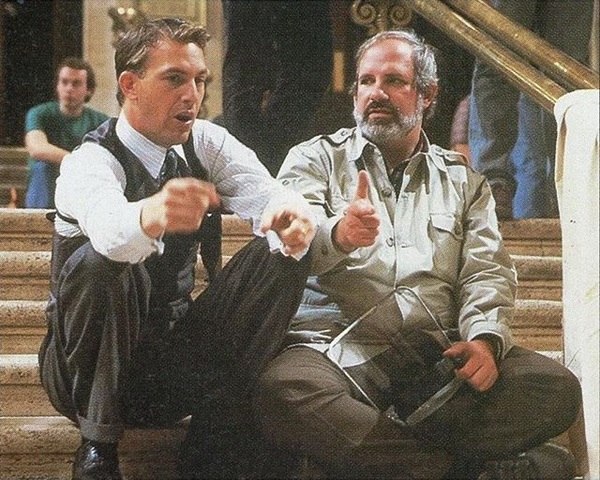
When I was young, my brother and I were introduced to many films by our parents. It was mostly movies from their youth, like The Blues Brothers and the Indiana Jones series. Some of these films you will notice do not exactly feel suitable for child’s viewing. One such film was Brian De Palma’s 1987 crime classic The Untouchables.Right off the bat (pun intended), the film felt distinct with its title sequence, where the long shadows remind one of bars from a prison cell, supported by Ennio Morricone’s tense and foreboding score. Then came the way the film was shot, the God’s eye view overlooking Al Capone now etched into my memory forever. What I remembered most though, was the violence. It was shocking as a child to see a kid get blown up in such a matter-of-fact way in only the second scene of the film. Another memorable scene came in the form of Al Capone bashing one of his subordinates to death with the aforementioned baseball bat. The image of the aftermath, the pool of blood surrounding the dead man’s head stayed with me for a long time, even as my parents covered my eyes during it. As you can understand, the film made quite an impression on me, but even greater in retrospect as it was most likely the work that introduced me to Brian De Palma’s filmography.
The story of The Untouchables is a fairly simple one. There is a basis in fact, though one needs not concern themselves with the history behind the real-life characters since the screenplay, written by famed Chicago playwright David Mamet, is mostly a work of fiction. The Untouchables takes place in Chicago during the year 1930, when Prohibition was in practice and usurped by ruthless gangsters who ruled the city. The person truly in charge was Alphonse “Al” Capone, portrayed by Robert De Niro. Touting himself as an innocent businessman, Capone reigned with terror and violence, a point the film makes very early in on. Assigned to stop him is Treasury Agent Elliot Ness, played by Kevin Costner in a star-making performance. Unlike his bought-out contemporaries, Ness believes in justice and aims to bring Capone down, no matter the costs. However, there is little he can do as a majority of his partners in the police department are in the pocket of Capone himself. That’s when he hatches the plan to form a small unit of handpicked cops, cops who cannot be bought by a cheap bribe, cops who are “untouchable.”
The first to be recruited is veteran Irish cop Jim Malone (Sean Connery in his Oscar-winning performance). Through Malone, Ness learns the “Chicago way,” using the same tactics as the crooks to put them behind bars. The other two recruits are both new to the field in their own way: marksman George Stone (Andy Garcia) proves his worth to the other members, both as an Italian-American and as a dedicated officer of the law. Fellow Treasury agent Oscar Wallace (Charles Martin Smith) is formally an accountant, but inexperienced when it comes to field action. However, it’s his knowledge of accounts and bookkeeping that helps bring the most crucial piece of evidence against Capone: income tax evasion.
To me, The Untouchables feels like a perfect storm, a film made by the right people at the right time. By the time he agreed to direct the film, De Palma had almost thirty years of filmmaking experience to guide him, and had mastered the art of visual storytelling, as seen in such brilliant films as Sisters, Carrie, and Blow Out. I think his style brings a freshness to the period gangster film that would otherwise feel rather quaint at this point. For his stab at the genre, De Palma pulls no punches and brings all his cinematic tricks: long takes, unusual camera angles, split diopters, steadicam, POV-shots; all in the name of Hitchcockian levels of suspense.
He also brings a grand, operatic sense of scope to the film that feels at times like a perfect blend between the majesty of David Lean with the American mythology of John Ford. And of course, we cannot discuss The Untouchables and its relationship to classic and foundational cinema without mentioning the train station shootout, an outright salute to the Odessa Step sequence from Sergei Eisenstein’s Battleship Potemkin. A superb sequence and a perfect filmmaking lesson in building tension, establishing geography and dramatic payoff, made even more impressive when one realizes it was added fairly late in the production process as a replacement to a more logistically elaborate train chase.